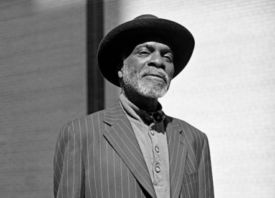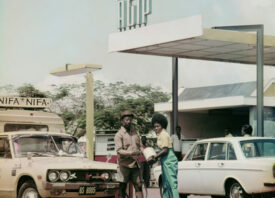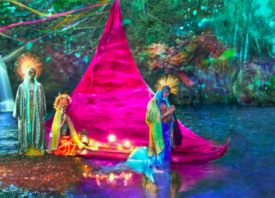Search this site
Climate Change Through an Architectural Lens


For American artist James Casebere, the constructed image is the assertion of ideas, fantasies, concepts and the relationships between them. Though they are not documents of real things, they vividly convey possibilities, portending a future that reminds us just how often life follows art.
In the new exhibition, On the Water’s Edge, now on view at Galerie Templon in Paris through March 7, 2020, Casebere explores the subject of climate change through a series of architectural landscapes that offer a look at how me might adapt and evolve to meet the encroaching threat of environmental disaster.
Casebere imagines beautiful structures that are designed to exist in a world where the water level continues to rise, offering a hybrid space for private sanctuary as well as an open embrace of the elements. Rather than work with existing structures, Casebere imagines a new type of architectural language that he painstakingly builds in his studio, then creates a majestic realm where the ocean and the land mingle and merge in a sumptuous water world.
Here Casebere shares his inspiration and experiences making this incredible series of work, reminding us never to underestimate the human imagination and our ability to solve the very problems we create.

Could you speak about the recurring theme of a Garden of Eden in a world on the brink of collapse in your work, and how this on-going sense of the apocalypse has been a constant throughout human history?
“My earlier work dealt with the idea of a little house on one’s own private Garden of Eden – a home in the suburbs, a private home in a yard surrounded by nature, a foundational idea, via the bungalow craze/ the Arts and Crafts Movement, generated by the mobility of the automobile. These suburbs were where I grew up, and the site of childhood memories for me.
“When I began as an artist this work also reflected my own alienation from the segregated suburbs during the Civil Rights Movement, the Vietnam War, and the Anti War Movement, etc.
“More recently when I re-visited the suburbs in the Landscapes with Houses series, it was partly about the pastiche grass roots ‘post modern’ eclectic expansion of the ex-urbs since then, over time, in a bankrupt oil driven economy where bedroom communities are separated from retail, manufacturing and any social infrastructure to create community. I was also addressing the anxiety created by the inflated real estate bubble and it’s bursting. The American Dream was being threatened and even lost.
“The on-going sense of apocalypse has been a constant throughout history, symbolized by the casting of Adam and Eve from the Garden of Eden. We have been given so much, and as a species been such poor stewards of the earth, because of innate greed and short sightedness. I think in the 1940s we faced the atom bomb and prospect of science opening the door to total annihilation, on the heels of the holocaust. Since then science has helped us feed the world’s poor in a way we could never imagine and now it has also helped us to get a clear picture of what we are doing to destroy the atmosphere, oceans and ecosystems upon which we depend. The gravest crisis we face today is the imminent degradation of the natural systems that sustain us physically, and spiritually. And it is real.”

What inspired you to create On the Water’s Edge?
“I had organically found my way out of the Landscapes with Houses to musings on landscape alone and the history of the genre. This led me to thinking about Kaspar David Friedrich, and how his painting The Sea of Ice, or Wreak of Hope reflected his moment in time and how that image in our time would reflect our concern, (or lack) about the warming of the climate and consequent melting of the ice caps. He also constructed that image out of his own imagination without ever having gone to the North Pole to see a sinking of the ship there. That painting was not an act of realism, but creative construction. I was also intrigued by the way his audience projected meanings regarding the state of the German economy and state on to his work at the time.
“After that image I worked on various images of the shore — a life saving station ± on the Outer Banks of North Carolina for example, and an image of Rockaway Beach after Hurricane Sandy. I began feeling the effects of rising sea levels and spending time on the shore, evacuating friends whose homes had been destroyed, etc..
“I took up surfing, spent time in the rainforest, and found courage in those who faced the future head on, who looked into the wind, and eagerly rode the waves generated by a life spinning out of balance.
“That was the beginning. Then I did a show in Munich at the Haus de Kunst, where I began to see clear parallels between Hitler and the rise of populism and Donald Trump, in America. When I came home I wanted to create some safe space of spiritual renewal and regeneration and looked to the Mexican architect, Louis Baragan for inspiration — crossing borders rather than building border walls.
“Following this, I began to create my own structures for the beach, Life saving stations of my own, built for the future, social infrastructure for migrant populations fleeing the devastation of ever increasing storms. This is what we have here — my own fantasy architecture for the future — safe structures for a drowned world. The best architects have always built for the poor and less privileged and I would love to collaborate with others to get things built for the more vulnerable around the globe.”

Could you speak how the construction of composite ensembles and landscapes allows you to explore both universal and contemporary themes about the state of humanity?
“I suppose when I started constructing things to photograph, I was acutely aware of how photographs lie. I was very interested in the Magic Realism of Gabriel Garcia Marquez, and other Latin American writers who were dealing with autocratic rulers and the aftermath of colonialism. Pablo Neruda, Carlos Fuentes, Octavio Paz, etc.
“I felt like our notions of reality were constructed either by others for their own benefit, or by one another simply given the limits of our perception and experience. At the same time the paper construct was a reflection of the transient, and fragile nature of life. Life as a dream.
“The constructed image is an attempt to assert that this is about ideas, fantasies, concepts and the relationships between them. These are not documents of real things. They are ideas.”
Could you speak about the architectural references, such as Paul Rudolph’s Florida houses and the early 20th-century Arts and Crafts movement, and the way you adapted these structures to address the needs of the world today?
“Paul Rudolf produced a fascinating body of work in his mid-century Florida Houses in and around Sarasota. They embodied many of the values of the Arts and Crafts Movement in that they promoted a close relationship with nature. He designed homes for the shore using materials derived from NASA and other innovative lightweight, but strong materials. Perhaps my adaptation is more symbolic. I use brighter, uplifting colors, and suggest temporary tent like structures for the displaced.”

Could you speak about how this series offers an optimistic response to the issue of climate change by focusing on the innovation and resilience of the human imagination?
“I think if we can employ our creative energies to first cutting carbon drastically and secondly to engineering solutions dedicated to adaptation and renewal we can move forward without getting fatalistic, depressed and discouraged. Beauty and creativity have the capacity to energize.
“Art can be an inspiration and a catalyst toward action, but can also provide a reprieve and respite from trauma and loss. Art that creates joy, or an oasis of calm, confidence and courage, can and often does affect the course of things and can contribute to positive change.”
What was the most challenging + most enjoyable aspect about creating On the Water’s Edge?
“The most challenging and rewarding part was thinking about structure, materials and use instead of just an image. I found myself thinking more like an architect. It’s always fun to shoot the pictures, but this time it involved design issues that I haven’t really delved into before. I found that I was designing structures initially for the image but then secondarily saw them morphing into lifesize structures or compounds in real space. It was both challenging and fun to imagine them as real places or emergency structures that might save lives. Ultimately these are simply photographs, but moving forward I would like to embrace a multi-disciplinary discussion about design, social infrastructure and change.”

All images: © James Casebere



